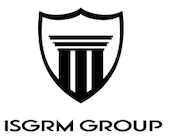In today’s digital landscape, cybersecurity incidents can happen to any organization, at any time. How you respond is critical to minimizing damage, maintaining trust, and ensuring regulatory compliance. ISGRM Group provides comprehensive incident management and response services to help organizations detect, contain, and recover from security events efficiently.
Our Approach
We follow a structured, proven methodology based on the five cornerstones of effective incident response:
-
Detection – Identify anomalies, threats, and potential breaches quickly using advanced monitoring and intelligence.
-
Assessment – Evaluate the scope, severity, and potential impact of the incident.
-
Forensics – Investigate the root cause, collect evidence, and document findings for compliance and legal requirements.
-
Containment – Implement immediate measures to prevent further damage or spread.
-
Recovery – Restore affected systems, validate integrity, and resume normal operations safely.
Our Services
-
Incident Response Planning & Preparation – Develop actionable plans, run tabletop exercises, and train teams for rapid response.
-
Real-Time Incident Response – Deploy expert teams to manage live security incidents, minimizing downtime and data loss.
-
Digital Forensics & Investigation – Identify attack vectors, analyze compromised systems, and gather evidence for audits or litigation.
-
Threat Containment & Mitigation – Implement measures to stop attacks, prevent lateral movement, and protect critical assets.
-
Post-Incident Analysis & Reporting – Deliver comprehensive reports with recommendations to strengthen security posture and prevent recurrence.
Why Choose ISGRM
-
Certified Experts: Our team includes CISSP, CEH, CISA and other top-tier security certifications.
-
Industry Experience: Extensive experience responding to incidents across multiple industries, including financial services, healthcare, and government.
-
Regulatory Alignment: Services designed to meet FFIEC, HIPAA, PCI-DSS, NIST, and other compliance requirements.
-
Proactive & Reactive Support: We help organizations prepare for incidents and provide rapid response when they occur.
Take Control of Your Security
Don’t wait for a breach to act. Partner with ISGRM Group to develop robust incident management program and ensure your organization can respond confidently to any security event.
📞 Call: (727) 537-9273
📩 Submit: Online Inquiry Form


